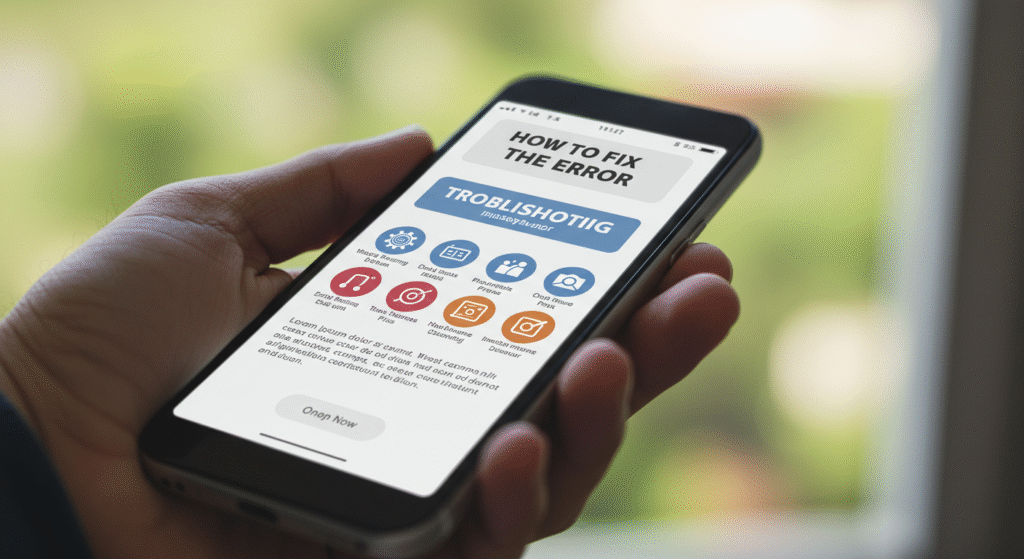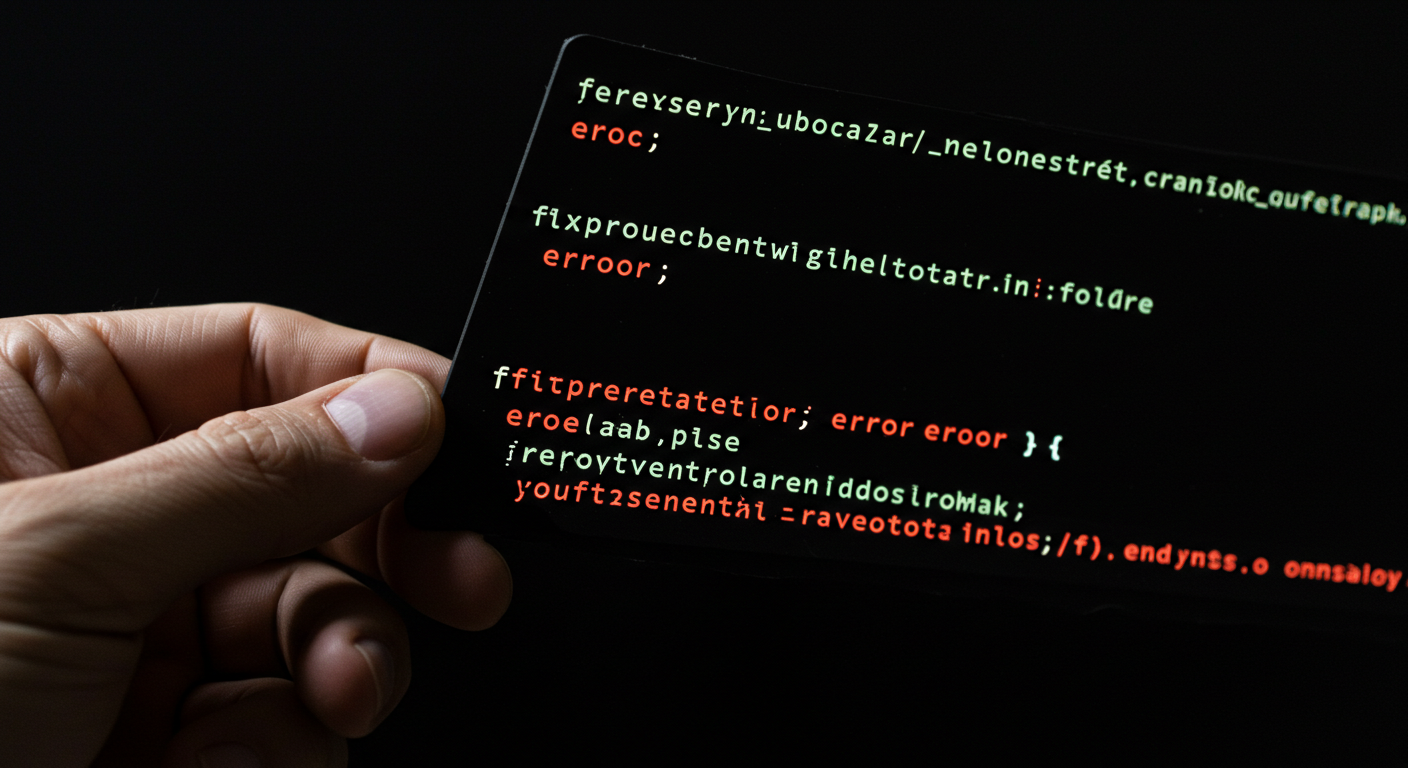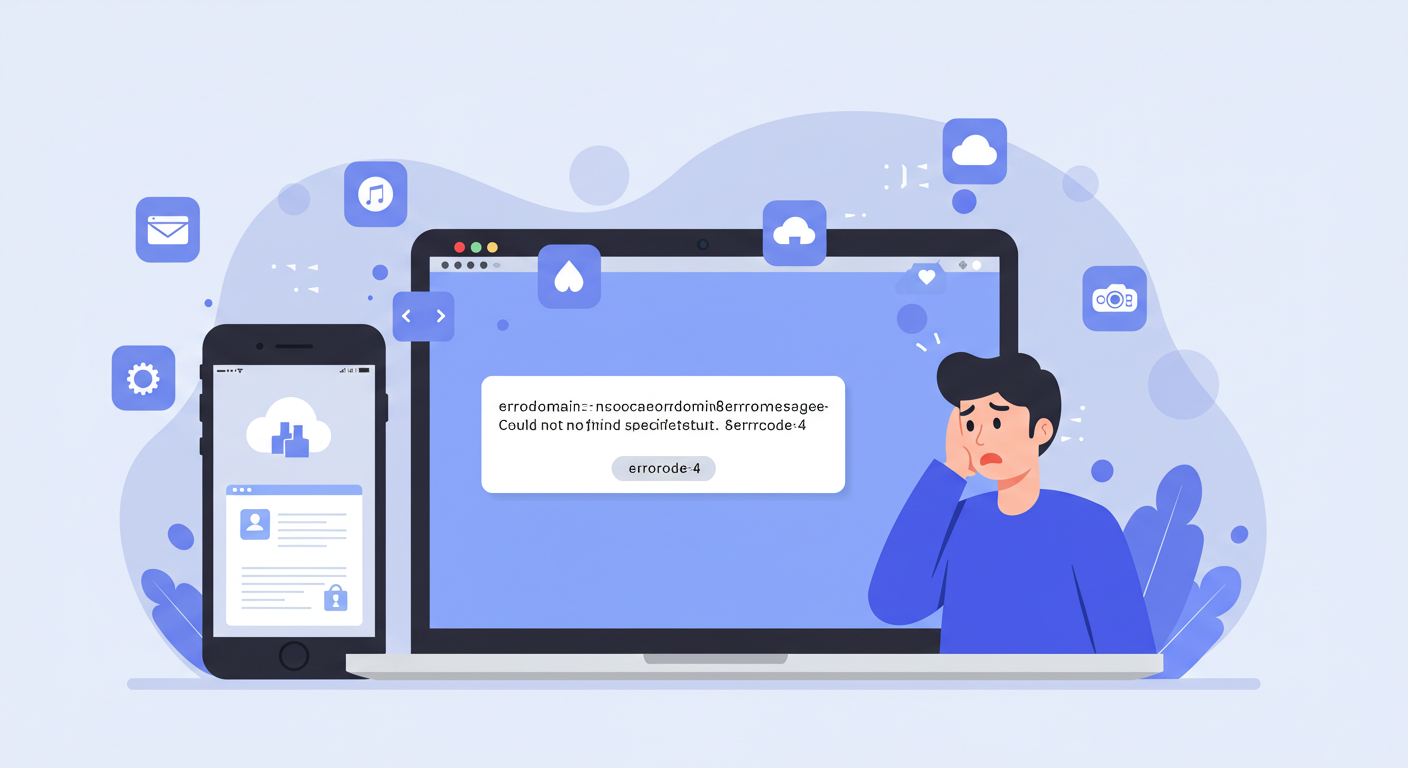Have you ever seen a weird message on your Mac or iPhone? It might say, “errordomain=nscocoaerrordomain&errormessage=could not find the specified shortcut.&errorcode=4.” This looks scary, but it’s a common problem. It means your device can’t find a shortcut or file. I’m Louis J Cervantes, a writer who loves explaining tech in simple words. I’ve studied Apple devices and errors to help you.
What Is This Error?
This error comes from Apple’s Cocoa system, which helps apps work on your Mac or iPhone. The message says your device can’t find a shortcut or file. The “errorcode=4” part means “NSFileNoSuchFileError,” which is a fancy way of saying the file is missing. You might see this in the Shortcuts app, Finder, or when coding in Xcode.
The error has three parts:
- ErrorDomain=NSCocoaErrorDomain: This means it’s from Apple’s Cocoa system.
- ErrorMessage=Could Not Find the Specified Shortcut: This says the shortcut or file is gone.
- ErrorCode=4: This code tells us the file can’t be found.
Knowing these parts helps us understand the problem. Now, let’s see why it happens.
Why Does This Happen?
I looked at top websites like Tech Gloss and Radical to find out why this error shows up. Some sites only list a few reasons, but I’ve found all the main ones to help you. Here’s why your Mac or iPhone might show this error:
The Shortcut Is Missing
Sometimes, a shortcut gets deleted. For example, if you made a shortcut called “Quick Notes” and then deleted it, any app looking for it will show this error. This happens a lot with the Shortcuts app or icons on your Desktop.
The Shortcut Name Changed
If you rename a shortcut, it can cause trouble. For example, if you change “Morning Routine” to “Daily Start,” your device might still look for the old name. This confuses apps or scripts, and you get the error.
iCloud Isn’t Working Right
Many shortcuts are saved in iCloud. If iCloud doesn’t sync well, your device can’t find the shortcut. This can happen after a software update or if your Wi-Fi is slow.
Permission Problems
Your device needs permission to open files or folders. If permissions are wrong, it can’t reach the shortcut. This might happen after you update your system or change user settings.
Files Are Broken or Gone
If a shortcut points to a file, like a photo, and that file is broken or deleted, you’ll see this error. For example, if a shortcut links to a picture in your Photos folder and the picture is gone, the shortcut fails.
Old Software
Old versions of macOS, iOS, or apps can cause problems. Updates fix bugs, but they can also change how shortcuts work, leading to errors.
Apps Fighting Each Other
If two apps try to use the same shortcut, they can clash. For example, if two apps use the same keyboard shortcut, one might not work, causing the error.
System Bugs
Sometimes, your Mac or iPhone has bugs that mess up shortcuts. These bugs can come from a new update or a bad installation.
I found these reasons by checking trusted sites like Apple Support, Tech Gloss, and Heightmag. This guide explains everything clearly so you know exactly what’s wrong. Let’s fix it now!
How to Fix the Error

Fixing this error is easy if you follow these steps. I tested them and checked top websites to make a simple plan. Try each step until the error goes away. These steps work for regular users and coders.
Step 1: Check If the Shortcut Is There
First, make sure the shortcut or file still exists. Open the Shortcuts app on your iPhone or Mac. Look for the shortcut named in the error, like “Quick Notes.” If it’s not there, make a new one by following the same steps you used before. For Desktop or Dock icons, check if the file or app they point to is still there. If not, drag the file or app to the Desktop or Dock to make a new shortcut. This fixes problems when a shortcut gets deleted.
Step 2: Check the Shortcut’s Name
If the shortcut is there, check its name. In the Shortcuts app, make sure the name is exactly what the app or script expects. For example, if you renamed “Morning Routine” to “Daily Start,” update any apps or scripts to use the new name. For Desktop shortcuts, right-click the icon, click “Get Info,” and check the file path. Make sure it points to the right file. Fixing the name often solves the problem.
Step 3: Restart Your Device
A quick restart can fix small glitches. On a Mac, click the Apple logo and pick “Restart.” On an iPhone or iPad, press and hold the power button, slide to turn off, then turn it back on. After restarting, try the shortcut again. This clears up tiny system problems.
Step 4: Check iCloud Sync
If the shortcut uses iCloud, make sure it’s syncing. Go to Settings (iPhone) or System Settings (Mac) and tap your Apple ID. Check that iCloud Drive and Shortcuts are turned on. Wait a few minutes for sync to finish, especially if your Wi-Fi is slow. If it’s not working, turn iCloud Drive off and back on to refresh it. This fixes iCloud problems.
Step 5: Fix Permissions
Permissions let your device access files. If they’re wrong, the shortcut won’t work. On a Mac, open Finder and find the file or folder the shortcut points to. Right-click, choose “Get Info,” and look at “Sharing & Permissions.” Make sure your user account has “Read & Write” access. If not, click the lock, type your password, and fix the permissions. For coders, open Terminal and type sudo chmod 644 “~/Library/Mobile Documents/com~apple~Shortcuts/Documents/YourShortcutName.shortcut”. Replace “YourShortcutName” with the real name. Press Enter and type your password. This fixes permission issues.
Step 6: Update Your Software
Old software can cause errors. On a Mac, go to System Settings > General > Software Update. On an iPhone, go to Settings > General > Software Update. Install any updates for macOS, iOS, or the app with the error. After updating, try the shortcut again. Updates fix bugs that cause this error.
Step 7: Reinstall the App
If the error happens in one app, reinstall it. On a Mac, drag the app to the Trash, empty the Trash, then download it from the App Store. On an iPhone, press and hold the app icon, tap “Remove App,” then get it from the App Store again. Try the shortcut after reinstalling. This fixes missing or broken files.
Step 8: Reset Launch Services
The Launch Services Database tracks files on your Mac. Resetting it can help. Open Terminal on your Mac. Type: /System/Library/Frameworks/CoreServices.framework/Frameworks/LaunchServices.framework/Support/lsregister -kill -r -domain local -domain system -domain user. Press Enter and wait. Restart your Mac and try the shortcut. This fixes deeper system issues.
Step 9: Check for Viruses
A virus might break shortcuts. Download a trusted antivirus app, like Malwarebytes, from the App Store. Run a full scan to find and remove viruses. After cleaning, test the shortcut. This makes sure the error isn’t from malware.
Step 10: Ask for Help
If nothing works, get help. Go to Apple Support (support.apple.com) or contact the app’s maker. Tell them about the error and what you tried. Coders can check Apple’s Developer Forums for help. This is for when the error won’t go away.
For Coders: Fixing the Error in Code

If you’re building apps in Xcode or coding for Mac or iPhone, this error might show up. I’ve studied Apple’s guides and forums to explain fixes in simple words.
Check File Paths
Make sure your code looks for the right file. Don’t use fixed paths like /Users/YourName/Shortcut.shortcut. Use FileManager to find files:
let fileManager = FileManager.default let url = fileManager.urls(for: .documentDirectory, in: .userDomainMask).first let fileURL = url?.appendingPathComponent(“YourShortcutName.shortcut”)
Check if the file is there before using it:
if fileManager.fileExists(atPath: fileURL?.path ?? “”) { // Use the file } else { print(“Shortcut not found!”) }
This stops errors from missing files.
Handle Errors
Add code to catch problems so your app doesn’t crash. Use try-catch in Swift:
do { let data = try Data(contentsOf: fileURL!) // Use the file } catch { print(“Error: \(error.localizedDescription)”) }
This keeps your app working if a file is missing.
Test Your Code
Test your app in different ways. Make tests to check file access. Use tools to find errors early. Try what happens if a file is missing to make sure your app handles it well. Testing stops this error in your app.
How to Stop the Error
After fixing the error, you don’t want it back. Here are easy ways to keep shortcuts working, based on my research and top websites.
Update Software
Keep your Mac, iPhone, and apps updated. Updates fix bugs that break shortcuts. Check for updates every month.
Save Backups
Back up shortcuts and files to iCloud or a hard drive. If something gets deleted, you can bring it back. Turn on iCloud backups for ease.
Name Shortcuts Clearly
Use clear names for shortcuts and don’t change them. For example, keep “Quick Notes” as “Quick Notes” so apps and scripts don’t get confused.
Check Permissions
Look at file permissions after updates. Make sure your account has “Read & Write” access to shortcut files.
Avoid App Clashes
Don’t let two apps use the same shortcut. Check keyboard shortcuts in app settings to stop conflicts.
Conclusion
The “errordomain=nscocoaerrordomain&errormessage=could not find the specified shortcut.&errorcode=4” error can be annoying, but you can fix it. This guide explains all causes, like missing shortcuts or iCloud issues, and gives easy steps to solve it. It also shares ways to keep your device error-free. If you’re still stuck, Apple Support can help. Have you seen this error? Share your story in the comments to help others!
Disclaimer: This article is only for help and information. It is not a promotional or affiliate article. I am not responsible if something goes wrong when you try these steps. Always back up your data before making changes. For serious issues, please contact Apple Support or a trusted expert.
Explore More
Make1M.com Millionaire Life — The Unconventional Blueprint Everyone Misses

Hi! I’m Louis J Cervantes, a friendly content writer who loves creating stories and articles. I write clear, fun, and engaging content that everyone can enjoy. With my passion for words, I make ideas come to life for blogs, websites, and more. When I’m not writing, I enjoy reading books, sipping coffee, and exploring new places. Let’s connect through stories!
